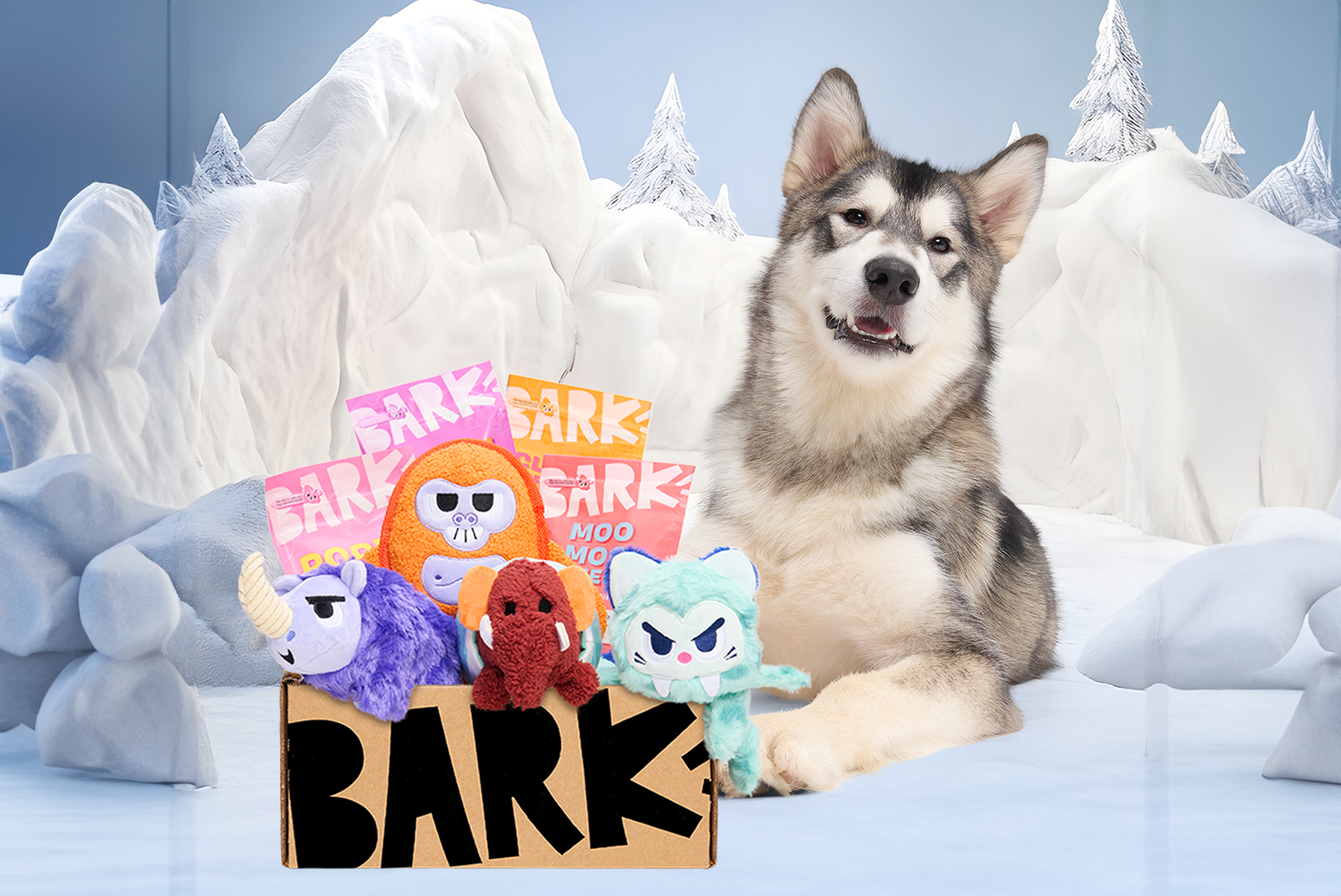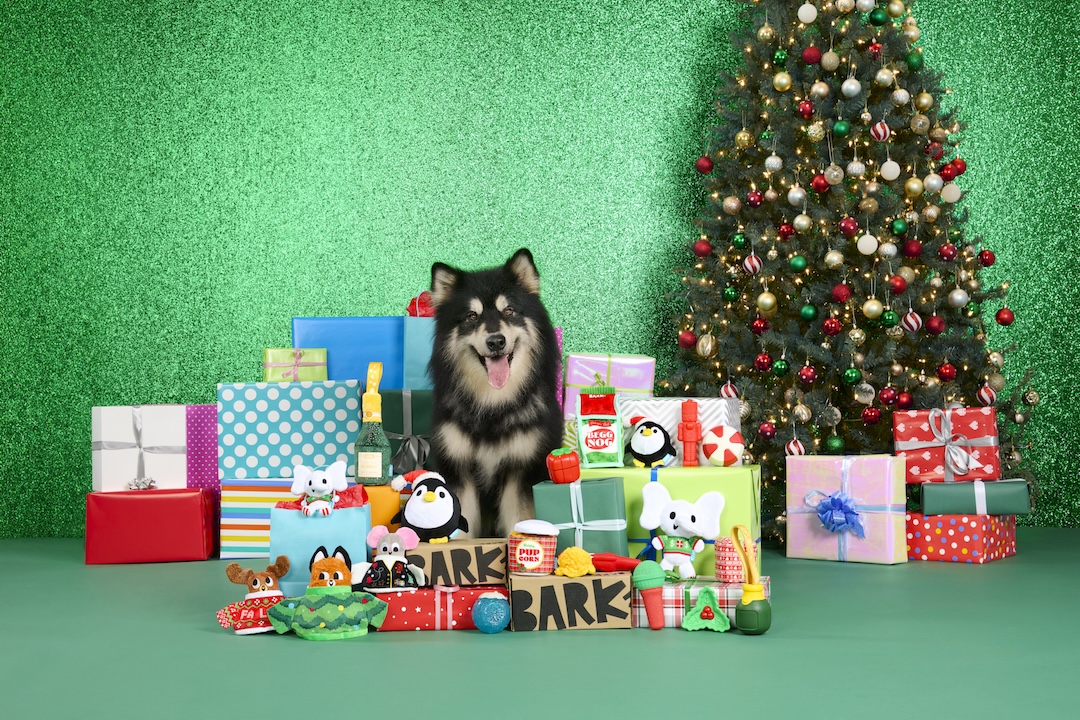Saint Bernards are little angels. Okay—they’re big angels, earning their sainted names after generations of good behavior and companionship. This serene and sacred dog breed is sweet and peaceful, watching over its owner with excited curiosity.
These giant dogs can sport several coats, ranging from short and smooth to long bristly, often in white and red with splotchy markings and black shadings. Tall, broad, and muscular, Saint Bernards are massive and tend to have large litters of nearly a dozen puppies—more to love, right? While Saint Bernards are associated with nobility, kindness, and strength, don’t be surprised if your large dog is goofy and excitable. They can’t be perfect little saints all the time.
Breed Overview
Also Known As…
Noble steed, Barry dog, saint dog, Beethoven. The Gentle Giant. The Alpine Nanny. The Patron Saint of Puppy Snuggles.
What Is The History Of The Saint Bernard?
The origins of the Saint Bernard breed go back nearly 1000 years, when a devout monk sought to rescue travelers waylaid by the treacherous Alpine pass between the Italian and Swiss border and nurse them back to health at his hospice.1 The monk was none other than Bernard of Menthon—later known as Saint Bernard—and his hospice stood for centuries as a haven for travelers, with generations of monks serving those in need of help.
In the late 1660s, the monks still working in the hospice began adopting and breeding dogs. First, the pups served as guard dogs, fending off potential predators and keeping the monks and travelers safe from harm. But that work wasn’t quite enough for these brave canines. Soon, they were proving themselves to be resourceful rescue dogs, masterfully navigating the treacherous paths and deep snow drifts that could prove deadly for pilgrims and travelers. With their big hearts, fluffy coats, and keen sense of smell, the Saint Bernard dog lived up to its namesake—sniffing out, digging up, and carrying to safety any downtrodden traveler or avalanche victim on the pass.2
For the next two hundred years, word of this courageous dog spread far and wide. Beyond the tales of the dogs’ bravery, legends emerged regarding the Saint Bernard’s particular hospitality. It has been said that, when searching for injured or trapped travelers, Saint Bernards would carry a small cask of brandy to help warm and revive their ward. While the truth of these claims remains highly suspect, the image of a Saint Bernard with a tiny barrel attached to a collar around its neck lives on.
By the late 1800s, the Swiss government began to assess, categorize, and determine the breed qualities of these canines. As breed clubs were established and dogs were registered, the giant breed began to spread throughout Europe, finding loving homes in distant countries. Though Saint Bernards may not be carrying out life-saving missions in the Swiss Alps any longer, they are finding ways to help as therapy dogs, companions, and protectors to families worldwide.
How Big Do Saint Bernards Get?
Height: 26–30 inches
Weight: 120–180 pounds
How Long Do Saint Bernards (Generally) Live?
Saint Bernards live approximately 8 to 10 years. That’s about standard for most big-boned dog breeds.
What Is A Saint Bernard’s Temperament & Personality Like?
As with most super-sized canines, Saint Bernards are big softies. St Bernard dogs rarely act tough, aggressive, or defensive. Instead, they’re sensitive and excited to find new ways to gain your attention and affection. As laidback pooches, Saint Bernards have no problem meeting new people. Your pup won’t just be the biggest dog at the park—they’ll also be the most social.
Saint Bernards may be known for their abilities as watchdogs, but it will take a bit of training to hone these skills. Whether you reinforce their protective behavior is totally up to you. Either way, you can be confident that your Saint Bernard will remain a committed guardian of you and your family—when they’re not distracted by a squirrel.
Are Saint Bernards Good With Kids? Cats? Dogs?
As beloved nanny dogs, you can feel secure introducing little ones to your Saint Bernard. Gentle enough to ensure everyone is safe and patient enough for some serious play, Saint Bernards make excellent family dogs. Kids love to climb all over St Bernard dogs and occasionally can even hop on for a ride. Just make sure that you supervise and educate kids about proper puppy handling.
The same goes for making introductions with your other animals. Saint Bernards can form close relationships with other dog breeds like a Boston terrier, Great Dane, or Dachshund because of their gentle instincts—they’re not likely to act aggressively or irrationally when meeting the rest of your furry friends. Give everyone some time to adjust, and you’ll soon see all your animals hanging out in one big cuddle puddle.
Are Saint Bernards High Energy?
While they have plenty of gas in the tank when it comes to playtime, the Saint Bernard is not exactly an intense breed. About 30 to 60 minutes of exercise a day will keep a Saint Bernard happy and healthy—more than that will likely leave them sleepy and lethargic.
It takes a lot of energy for this giant breed to move, so don’t be surprised if they’re ready to sit down after a trip around the neighborhood.
Are Saint Bernards Hard To Train?
Given their search-and-rescue roots, Saint Bernards are not likely to put up a struggle when it comes to training. In fact, Saint Bernard dogs were bred to interact and learn from humans. Not only have they honed their training skills over several generations, but Saint Bernards also respond very well to positive reinforcement and verbal affirmations from their owners. These dogs live to please, and nothing would make them happier than to earn your praise.
Do Saint Bernards Have Health Issues?
Like all dogs, this behemoth breed is vulnerable to certain health conditions and complications. Saint Bernard owners should be aware of the most common risks and diseases, including:3
- Joint issues – Long-term wear on joints and cartilage can be unavoidable for many breeds. That said, some Saint Bernard dogs are predisposed to hip and elbow dysplasia due to genetic factors. Talk to your veterinarian about the risks and available treatment methods to minimize discomfort and mobility loss for your dog.
- Bloat – Typically caused by dietary issues, bloat is a serious condition that can affect any dog breed, though it may be more common in Saint Bernards. Bloat leads to trapped gas, food, or fluid in the stomach and, while dangerous, can be managed with veterinary intervention.
- Eye problems – Saint Bernards are also prone to various eye conditions, including distichiasis, entropion, and ectropion. These conditions may affect your pup’s ability to see and can cause discomfort and irritation if left untreated, so talk to your vet if you have dog health concerns.
Do Saint Bernard Need To Be Groomed?
You don’t need to be a hair care professional to look after your Saint Bernard’s grooming needs. Long-haired or short, your gentle giant deserves a few brushings every week to help manage snarled, tangled, and matted fur. Be sure to choose a brush that matches your dog’s fur type, and why not throw a bath in every month or two?
Nail clipping and ear cleaning are essential, too. If you need an extra hand, reach out to a local grooming salon. You shouldn’t need a full-on haircut for your Saint Bernard, but professional groomers will be able to blow out your pup’s undercoat, shave down their paw pads, and take care of all the nitty-gritty details.
How Much Does It Cost To Care For A Saint Bernard?
Owning a Saint Bernard puppy is a privilege and a responsibility. You can look forward to a decade of snuggles and laughs, but you’ll also need to consider your budget after adoption. Taking care of a Saint Bernard can cost between $1,000 and $3,000 a year, depending on several factors. Keep in mind that the very first year is often the most expensive.
Food
Don’t hold back when it comes to feeding this large breed. Saint Bernards have huge appetites, eating 5 to 6 cups of food daily, adding up to $60–$120 per month.
You don’t have to settle for sub-par dog food anymore. With BARK Eats, your Saint Bernard can chow down on perfectly portioned meals designed by veterinary nutritionists to fulfill their breed’s specific needs. It’s a customized meal plan for your pup, delivered straight to your door. Try it today and get 50% off your first month!
Routine Vet Care (Healthy Dog)
A vet checkup typically costs about $50. Unfortunately, that doesn’t include bloodwork, x-rays, or medications. If your Saint Bernard dog runs into health trouble, you should be prepared to spend several hundred dollars to identify and treat the issue.
Preventative Medications For Saint Bernards
Don’t skimp on parasite prevention. Fleas, ticks, and heartworm pose risks for every dog breed, but for about $150–$200 per year, you can protect your pup against all these nasty bugs.
Saint Bernard Grooming
Brushes, shampoo, and nail clippers shouldn’t break the bank, even if you need to buy the biggest version for your Saint Bernard. You’ll likely spend $50 to $100 picking up the necessary accessories to groom your sacred dog at home.
If you’re looking for a groomer to keep your working dog looking fresh, expect to pay a premium for their specialized services. Big dogs typically demand more time and attention, meaning you’ll likely spend $100 or more for every professional appointment. Staying this beautiful? Not cheap.
Toys, Treats, Beds, & Accessories
The final lap of puppy budgeting involves all those essential (and maybe not-so-essential) accessories. Of course, your pup will need some toys to stay active, treats for training, and a bed to snuggle up in when you’re not around. You could spend less than $100 on all these items, or you could splurge and pick up a diamond-encrusted collar—it’s really up to you.
Looking for a fun way to treat your Saint Bernard puppy? Sign up for BarkBox, and you’ll receive 2 toys, 2 full-size bags of treats, and a tasty chew every month. Saint Bernards have jaws of steel, so if you’re looking to give them something to really sink their teeth in, upgrade to the Super Chewer subscription for tougher toys and chews that will keep your pup’s jaw working overtime. Order today and double your first box for free.
There’s no limit to spoiling your big pooch, but don’t forget about the essentials, including:
- Food and water bowls ($10–$50)
- Crate ($100–$200)
- Leashes ($10–50)
Finally, we recommend investing in a tiny cask collar to reenact the Saint Bernard’s most iconic look. Your large dog might not be rescuing anyone from a snow bank, but at least they’ll look up for the job.
Sources:
- American Kennel Club. Saint Bernard.
- House of Switzerland. The St Bernard: the making of an Alpine legend. https://houseofswitzerland.org/swissstories/history/st-bernard-making-alpine-legend
- Pet MD. Saint Bernard. https://www.petmd.com/dog/breeds/c_dg_saint_bernard





